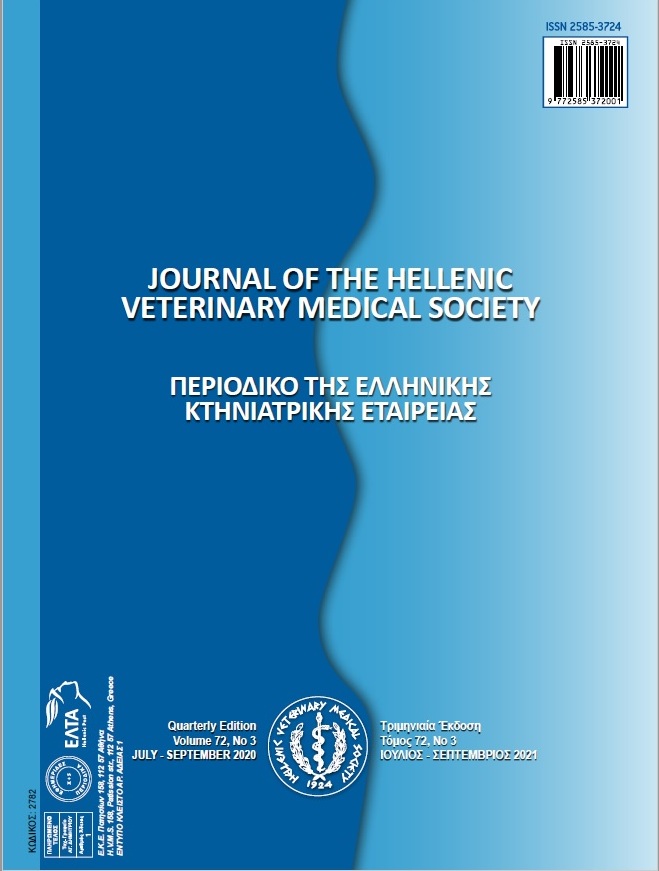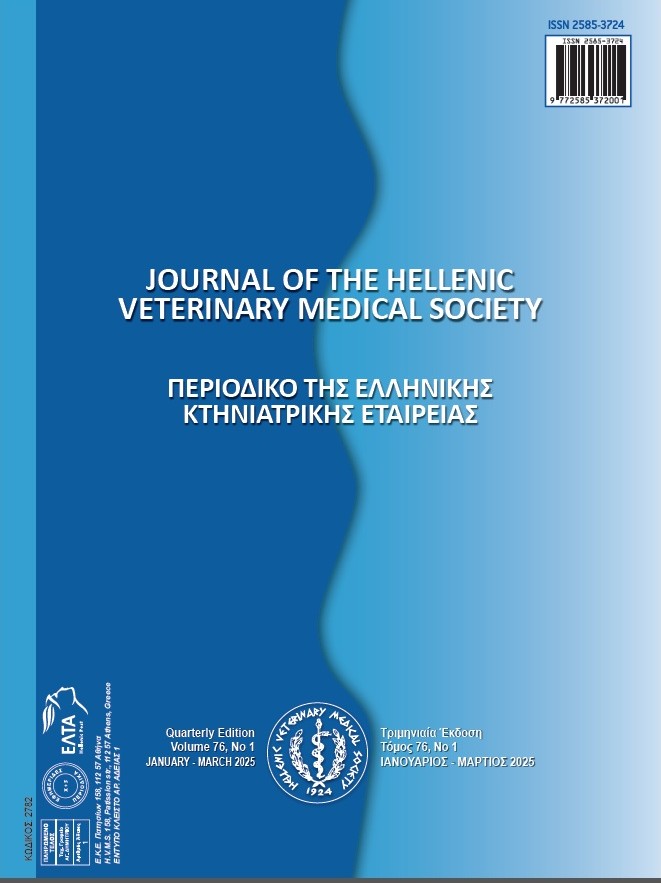Seroprevalence and risk factors associated with Salmonella Dublin presence in Algerian dairy farms
Abstract
Salmonella Dublin is a causative agent of a gastrointestinal bacterial infection prevalent in many cattle herds worldwide. Hence, the goal of this research was to evaluate the prevalence of Salmonella Dublin carriage in fecal and milk samples from dairy cattle from Algeria, and to investigate potential risk factors associated with the presence of S. Dublin antibodies. A total of 307 cows from 39 farms were analyzed in this study. Bacteriological and immunological methods were used to isolate and detect S. Dublin antibodies in feces and cow’s milk. Antimicrobial susceptibility testing was performed using the disc diffusion method. Logistic regression was used to study risk factors associated with S. Dublin antibodies. The bacteriological results showed the absence of S. Dublin and a prevalence of 0.97 % (3/307) (IC 95% 0 - 2.08)for S. Mbandaka. The immunological analysis of milk by the ELISA technique showed a prevalence of 36.33% (95% CI 30.44 - 42.22) for S. Dublin. Final multivariate regression models showed that the breed, the region and introduction of purchased cattle were associated with the presence of S. Dublin antibodies. This study is the first that reports the seroprevalence and risk factors associated with S. Dublin infection in Algeria and could be considered as a comparison point for further studies in Algeria.
Article Details
- Zitationsvorschlag
-
HEZIL, D., BENAMROUCHE, N., TENNAH, S., BENSEGHIR, H., ZAATOUT, N., ZAIDI, S., ZINEDDINE, R., BOUTABBA, D., BELKADER, C., CHADI, H., BERNARD, C., & GHALMI, F. (2021). Seroprevalence and risk factors associated with Salmonella Dublin presence in Algerian dairy farms. Journal of the Hellenic Veterinary Medical Society, 72(3), 3059–3066. https://doi.org/10.12681/jhvms.28488
- Ausgabe
- Bd. 72 Nr. 3 (2021)
- Rubrik
- Research Articles

Dieses Werk steht unter der Lizenz Creative Commons Namensnennung - Nicht-kommerziell 4.0 International.
Authors who publish with this journal agree to the following terms:
· Authors retain copyright and grant the journal right of first publication with the work simultaneously licensed under a Creative Commons Attribution Non-Commercial License that allows others to share the work with an acknowledgement of the work's authorship and initial publication in this journal.
· Authors are able to enter into separate, additional contractual arrangements for the non-exclusive distribution of the journal's published version of the work (e.g. post it to an institutional repository or publish it in a book), with an acknowledgement of its initial publication in this journal.
· Authors are permitted and encouraged to post their work online (preferably in institutional repositories or on their website) prior to and during the submission process, as it can lead to productive exchanges, as well as earlier and greater citation of published work.





